MP Clifford Hayes introduces bill to make VCAT listen to councils
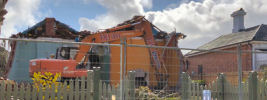
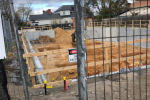 "People have a right to a say in the character of their street, and their neighbourhood. The principle of subsidiarity, of devolving power to the lowest practical level, is important. It is indeed good for people’s mental health if they have a say, and bad for their mental health if they feel powerless. My Bill does two key things – it requires VCAT to follow properly made Council decisions, and it gives Councils, rather than Ministers, the last word on height controls. Hayes says, "At present VCAT is out of control. Its proper role is to ensure that Councils don’t act in an arbitrary or capricious fashion [...]. But VCAT behaves as a Planning Authority in its own right, telling Councils that although the Council wants a height limit of, say, 4 storeys, they think that 6 storeys would be better! Councils should be able to put in place mandatory height controls at a height acceptable to the community. The high rise buildings being approved by Planning Ministers are not in the best interests of residents, overshadowing them and turning Melbourne into a soulless concrete jungle. Communities should have a say in relation to height limits." (MP Clifford Hayes in speech to Protectors of Public Lands Vic. reproduced here.) (Photos by Jill Quirk)
"People have a right to a say in the character of their street, and their neighbourhood. The principle of subsidiarity, of devolving power to the lowest practical level, is important. It is indeed good for people’s mental health if they have a say, and bad for their mental health if they feel powerless. My Bill does two key things – it requires VCAT to follow properly made Council decisions, and it gives Councils, rather than Ministers, the last word on height controls. Hayes says, "At present VCAT is out of control. Its proper role is to ensure that Councils don’t act in an arbitrary or capricious fashion [...]. But VCAT behaves as a Planning Authority in its own right, telling Councils that although the Council wants a height limit of, say, 4 storeys, they think that 6 storeys would be better! Councils should be able to put in place mandatory height controls at a height acceptable to the community. The high rise buildings being approved by Planning Ministers are not in the best interests of residents, overshadowing them and turning Melbourne into a soulless concrete jungle. Communities should have a say in relation to height limits." (MP Clifford Hayes in speech to Protectors of Public Lands Vic. reproduced here.) (Photos by Jill Quirk)
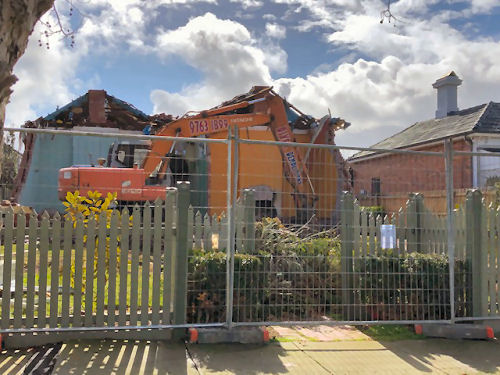
“Protecting Open Space in 21st Century Melbourne” - Speech to Protectors of Public Lands Saturday 26 October 2019 by Clifford Hayes
Thank you for the invitation to speak with you this afternoon and thank you also for the opportunity to represent you in the Victorian Parliament. I am aware that it is a great honour.
I want to congratulate the Protectors of Public Lands on what you do. Protecting the public domain is very selfless, unselfish work. It is also often thankless and difficult work. They’re not making any more land, but we are making many more people, and the resulting clash over the uses to which land should be put are becoming more acute with every passing year.
And of course the increasing price of land in our suburbs has made open space immensely valuable in dollar terms, leading to landowners including Commonwealth and State Governments looking to sell it off and make a real estate killing. Yet the population growth that drives the escalating land price also makes open space more valuable than ever AS open space – keeping our city and suburbs cool, giving us public places to walk, meet or rest, helping our mental health.
Just a fortnight ago the journalist Noel Towell reported in The Age that the State Labor Government is poised to massively ramp up its sales of publicly owned Crown land around Victoria, with more than 2600 hectares set to go under the hammer.
About 150 sites in Melbourne and country Victoria are listed as on the market for future land sales in a sell off that dwarfs the 533 hectares sold in the past 10 years.
Last week I asked a Question without Notice in the Legislative Council about this Report as follows – “Given the dramatic ongoing decline in open space per capita in Melbourne as a result of population growth of well over 100,000 per annum and the alarming decline in Melbourne’s vegetation cover, will the government investigate offering these parcels to local Councils for a nominal amount subject to an enforceable condition that they are turned into, maintained and retained as public open space?”
I am well aware that people in this room have spent a lot of time trying to stop the State Government selling off public land, often involving Government agencies offering the land to Councils at inflated prices that amount to duress, and a scam, where the public is being expected to pay for land that we already own. The Minister’s reply was polite, but not very encouraging. That is why your work is so important, keeping Governments and their Departments and agencies honest.
I see the clash over using land for public open space, or for other uses – which are often in themselves good and socially beneficial, such as facilities for women’s sport – played out time and time again in my Electorate. I have the good fortune to represent a significant area of beautiful Port Phillip Bay beachfront, and that is an area of great conflict. We have proposals to add a large restaurant to the Brighton Life Saving Club as part of its redevelopment. We have a proposal from a café lessee to take over and develop an area where public toilets are located at North Point. We have proposals to extend the opening hours for a café/restaurant at Ricketts Point.
Each of these proposals can sound reasonable, and many of us like to eat or drink by the beach or foreshore, but their sum total is to kill off the connection with nature that is the very thing that makes the beach attractive in the first place – to kill the goose that lays the golden egg.
Unfortunately – and I think your late Secretary and driving force, Julianne Bell, grasped this with great clarity – there is hardly a blade of grass or grain of sand that isn’t being eyed off by someone who wants to make a dollar out of it or appropriate it for their own benefit. It’s not just in my part of the world – I know of the battle, for example, in historic Footscray Park, where the well connected Melbourne Victory soccer club is seeking to establish a large stadium in parkland close to the Maribrynong River. And of the Warrnambool Racing Club’s appropriation of the beaches between Warrnambool and Port Fairy to train racehorses, to the detriment of other beach users, particularly the endangered Hooded Plover.
Often when land is appropriated and vegetation bulldozed elaborate promises are made about offsets elsewhere. In my experience these undertakings are seldom honoured. For example 10 years ago when a previous State Labor Government expanded Melbourne’s Urban Growth Boundary to allow for massive development in Melbourne’s west it said developers would have to pay a habitat protection levy which would enable the purchase of areas of grassland which would offset the development. 10 years later it has emerged that at the present rate of progress it will take the Victorian Government 100 years to purchase the amount of grassland it promised to protect at the time!
And just last week it introduced a Bill to amend the levy. For starters I am disappointed to read that the Habitat Compensation fee system is being renamed the Environment Mitigation Levy. It is the loss of habitat that is the core issue here, and we should never lose sight of it. I am also troubled to learn that property developers are talking about how well the Government has consulted with them over this Bill, when I don’t think it has been consulting with environment groups at all!
In my first speech to Parliament in February I set out my vision for Melbourne – to make it a great place to live, not merely a great place in population size to rival such places as Shanghai, New York, London, or Sao Paolo. Such greatness would be mere obesity, with all the disadvantages of such.
Not a city or a state where people are crammed into dogbox apartments, living on crowded and congested streets in an environmentally unfriendly concrete heat island, but a spacious city with open skies, open and tree-filled streets, with gardens.
Unfortunately this is not the direction in which Melbourne is headed. Since Australia’s migration programme was turbocharged and effectively trebled some 15 years ago, Melbourne has been growing at a rate of over 100,000 people each year, and is now growing at around 130,000 people each year. This has had numerous adverse impacts on our quality of life – traffic congestion, housing unaffordability, loss of vegetation, wildlife and open space. One of the consequences of Melbourne’s rapid population growth has been an attack on local democracy. Residents have lost their right to a say in the character of their street, their neighbourhood and their community.
Consistent with my election commitments I moved a Private Members Motion in May, aimed at restoring local democracy in planning issues and curbing the power of the Victorian Civil & Administrative Tribunal (VCAT). The Motion called on the Government to give more power to local councils to defend their communities from inappropriate developments.
In particular it called on the Government to amend the Planning & Environment Act so that VCAT was required to give effect to local planning policies, rather than just taking planning schemes into account. It also called on the Minister for Planning to implement mandatory height controls, rather than discretionary height controls, where Councils sought them.
I was delighted that this motion was passed in the Legislative Council with the support of the Liberal opposition and my crossbench colleagues. It is very unusual for a Motion to pass in either House without the Government’s support.
I believe there is a real mood for change in the community to fix a planning scheme which is biased against local residents and skewed in favour of property developers. I am now preparing amendments to the Planning & Environment Act which would give legal effect to the sentiments in my Private Member’s Motion. I believe these amendments would help restore the balance and give local residents a genuine say in planning decisions. I am encouraging residents and community groups to support my campaign for greater local democracy in the Planning & Environment Act.
People have a right to a say in the character of their street, and their neighbourhood. The principle of subsidiarity, of devolving power to the lowest practical level, is important. It is indeed good for people’s mental health if they have a say, and bad for their mental health if they feel powerless.
• The Bill does two key things – it requires VCAT to follow properly made Council decisions, and it gives Councils, rather than Ministers, the last word on height controls.
• At present VCAT is out of control. Its proper role is to ensure that Councils don’t act in an arbitrary or capricious fashion, for example by allowing one person to build four units on their property, and refusing to allow a next door neighbour with the same size property to do the same. But VCAT behaves as a Planning Authority in its own right, telling Councils that although the Council wants a height limit of, say, 4 storeys, they think that 6 storeys would be better!
Councils should be able to put in place mandatory height controls at a height acceptable to the community. The high rise buildings being approved by Planning Ministers are not in the best interests of residents, overshadowing them and turning Melbourne into a soulless concrete jungle. Communities should have a say in relation to height limits.
That said, I am absolutely aware that giving Councils more power is not a silver bullet, and that Councils can and do make poor decisions.
• It is not true that people who oppose high rise are NIMBYs, or that they favour urban sprawl. They don’t want the high rise forced in ANYONE’s backyard. What the State Government needs to examine is the premise that Melbourne has to keep increasing by 130,000 people each year. That’s the issue that people are never given a say about.
• Melbourne’s rapid population growth, combined with enforced urban consolidation, has resulted in a paving over of open space and a loss of vegetation and wildlife, when in times of climate change we need our vegetation, front yards and back yards. Urban consolidation has turned suburbs into heat islands. Population growth has driven traffic congestion and road rage. It has driven housing unaffordability and homelessness, and population growth has driven the construction of high rise buildings which are full of defects and even unsafe.
• Property developers have done well out of this government sponsored building boom of the past 15 years, but ordinary residents have not. Their quality of life has declined, and it will continue to decline unless legislation like this puts power back in the hands of ordinary people.
A study in December 2017 found that high-rise living had adverse impacts on mental health. It found that sharing semi-public spaces with strangers can make residents more suspicious and fearful of crime. Many feel an absence of community, despite living alongside tens or even hundreds of other people.
There is a fear of isolation. During ongoing research into social isolation among older people in the English city of Leeds, residents of high-rise buildings reported feeling lonely and isolated – some were afraid to even open their front doors.
Many advocates of high density living claim that it is better for the environment and climate change than suburban sprawl. Studies have shown this to be not the case. One 3 year US study in 2017 found that living in a high-rise tower in Chicago was much less environmentally sustainable than moving to a house in the suburbs. Apartment dwellers consume more energy, spend more of their time travelling, and use their cars more.
In terms of embodied energy in construction high-rise fared even worse. The project found that high-rise buildings required 49% more embodied energy to construct per square metre, and a stunning 72% more on a per person basis.
As has been noted before, the most energy efficient building is the one that already exists. Unfortunately State Governments have paid way too little attention to this and have made it far too easy to demolish existing houses, even those of heritage significance.
The idea that high density apartments, which require more lighting and air conditioning, are more sustainable than detached houses, which can have solar panels, rainwater tanks, and front yards and back yards with trees, shade and open space, is contradicted by the evidence.
So what needs to change? In my view, it’s not complicated. Two words - local democracy. Give the local residents the power in relation to planning. The Planning and Environment Act 1987 was supposed to establish a framework for planning the use, development and protection of land in Victoria in the present and long-term interests of all Victorians. It is my contention that it has been changed by successive governments so that it does not achieve those objectives.
The bill I will present seeks to do this in two ways. First by directing planning authorities and VCAT to consider and give effect to local planning policies which have been approved by the Government. Secondly by allowing Municipal Councils to set real height limits, including mandatory controls, which cannot be undermined by either State Government or VCAT.
Under my bill the Minister for Planning will be required to accept Council proposals for mandatory height limits, rather than arbitrarily raise the limits or make them discretionary and therefore worthless, as he does at present.
The bill will also make VCAT consider Strategic Planning Policies developed by Councils. What’s more, it will instruct VCAT to give effect to such local planning policies as expressed in the Local Planning Policy Framework.
I encourage your members to contact your local Members of Parliament by phone, email, letter, or in person, to encourage them to vote for the Bill. And on Sunday 10 November, in the week before my Bill gets debated in the Legislative Council, there will be a Rally at the Elsternwick Plaza, next to Elsternwick Station, at 2pm. I encourage you to attend, and bring others!
My bill is a modest proposal that is intended to start the process of giving back planning controls to local communities through their elected councils.
I hope it will not only be a shot in the arm for local democracy and genuine community say, I hope it will act as a brake on rampant habitat destruction. The key driver of habitat destruction is population growth. Sadly environment groups seem to lack the courage to stand up and say this. One honourable exception I came across recently was Jeff Davis, Assistant Director of the Washington Department of Fish and Wildlife Habitat at a June 2019 meeting of the Southern Resident Killer Whale Task Force, who said “Population Growth is the Top Challenge for Conserving Habitat”.
He was followed by a Task Force Member G.I. James, who works with the Lummi Nation’s Natural Resources Division, who was prepared to tell a few home truths about the threat to the orcas –
“We’re worried about the population that’s going to be here in the next 25 years and we can’t even address the problems that are being created by the people who are here right now. We think we can have it all. We can have the roads, we can have our cars, we can have our businesses and we can still have those natural resources that depend on the very same things all that destroys”.
Indeed. I thank the Protectors of Public Lands for everything you have done, and are doing, to protect the quality of life in Melbourne from overdevelopment. It is often hard, unrewarding work, but it is very important in maintaining our quality of life, and not allowing it to quietly slip away.
I hope you can join my fight for a better, not bigger, Australia, and I and my office are always ready to assist you in any way we can.
Clifford Hayes, MLC,
Sustainable Australia Party
Southern Metropolitan Region.
Direct: (03) 9530 8399 | 0458 750 700
Business Address: 206 Bay Street, Brighton

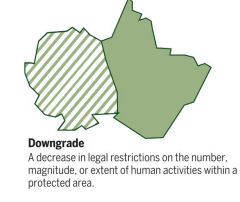 An
An 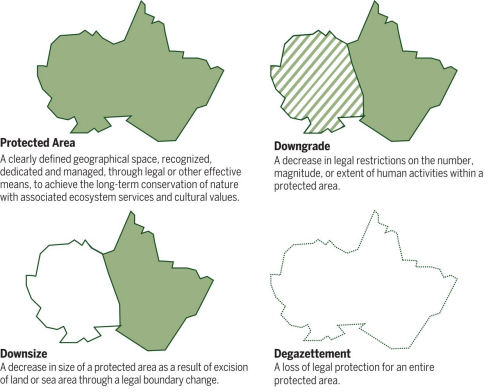
 The driving force behind the Protectors of Public Lands, Julianne Bell, passed away on Friday January 27 this year. Julianne was an indefatigable and tireless campaigner for the protection of Melbourne’s public open spaces. She was most well-known as the defender of Royal Park against any and all who would seek to diminish it for their own purposes, and she told me that she was most proud of her role in stopping the East-West Link, a Freeway which would carve up Royal Park in an outrageous act of environmental vandalism. She was the driving force behind this organisation and used it to defend public open spaces far and wide from all manner of threats – the Carlton Gardens, the Catani Gardens, the Exhibition Gardens, the Rogers Memorial Reserve and many others too numerous to mention – no public open space was too far away or too small to merit her attention.
The driving force behind the Protectors of Public Lands, Julianne Bell, passed away on Friday January 27 this year. Julianne was an indefatigable and tireless campaigner for the protection of Melbourne’s public open spaces. She was most well-known as the defender of Royal Park against any and all who would seek to diminish it for their own purposes, and she told me that she was most proud of her role in stopping the East-West Link, a Freeway which would carve up Royal Park in an outrageous act of environmental vandalism. She was the driving force behind this organisation and used it to defend public open spaces far and wide from all manner of threats – the Carlton Gardens, the Catani Gardens, the Exhibition Gardens, the Rogers Memorial Reserve and many others too numerous to mention – no public open space was too far away or too small to merit her attention.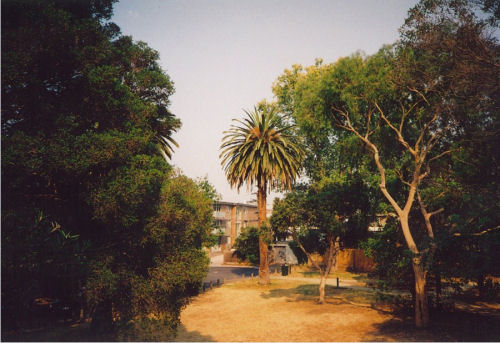
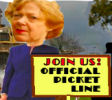 Despite the fact there are no publicly available plans for this project, Stage One of construction of the East West Link has already commenced with "geological investigation" (i.e. drilling for soil and rock samples and testing for underground water) along the proposed alignment of the above/under/on ground road way. As spelt out in the Eddington Review of 2008 the freeway/tollway is likely to be open cut through Royal Park. It seems that there has been a total failure to responsibly and democratically consult the Victorian Public on their wishes in this matter as it affects public lands. The snap protest will be held near the reserve with the drilling rig at the corner of Neill and Canning Streets Carlton outside the Dan O’Connell Hotel starting at 12:30 pm. (Melways Map Reference 2BK4).
Despite the fact there are no publicly available plans for this project, Stage One of construction of the East West Link has already commenced with "geological investigation" (i.e. drilling for soil and rock samples and testing for underground water) along the proposed alignment of the above/under/on ground road way. As spelt out in the Eddington Review of 2008 the freeway/tollway is likely to be open cut through Royal Park. It seems that there has been a total failure to responsibly and democratically consult the Victorian Public on their wishes in this matter as it affects public lands. The snap protest will be held near the reserve with the drilling rig at the corner of Neill and Canning Streets Carlton outside the Dan O’Connell Hotel starting at 12:30 pm. (Melways Map Reference 2BK4). 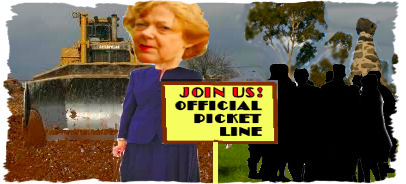
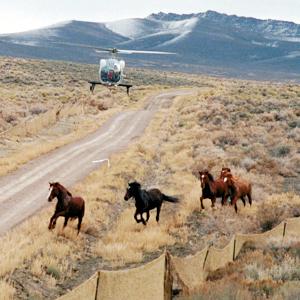

Recent comments